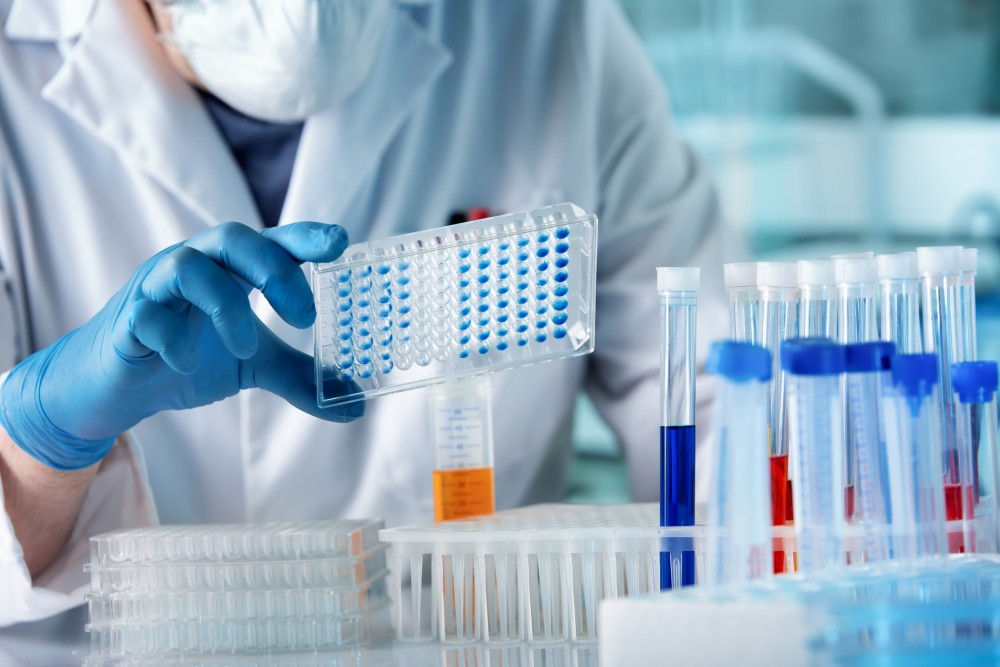New tests for early detection of pancreatic cancer offer significant hope
Researchers at Queen Mary have developed an easy-to-use urine test to detect pancreatic cancer. This, in combination with an algorithm-based risk score, may offer earlier detection of the cancer, and offer a significantly better prognosis.
Pancreatic ductal adenocarcinoma (PDAC), the most common form of pancreatic cancer, is often asymptomatic until it has metastasised. As a result, in over 80 percent of patients it is diagnosed very late, and the survival rate for patients is poor – only 10 per cent will live more than five years after diagnosis.
Using biomarkers to identify the cancer early
A biomarker known as CA19-9 is commonly used to identify the presence of pancreatic cancer. However, the test for the presence of this marker is not accurate enough to detect early lesions or stage 1 PDAC.
Professor Crnogorac-Jurcevic and her team performed a large-scale proteomics (mass spectrometry) analysis of urine samples collected from healthy controls, patients with benign pancreatic diseases and patients with PDAC, and selected the three key biomarkers that showed best discrimination between the experimental groups: LYVE1, REG1B and TFF1. These biomarkers were subsequently successfully validated in over 1000 urine specimens, showing that the biomarker panel was able to discriminate cancer from non-cancer patients with accuracy of around 90 per cent.
Professor Crnogorac-Jurcevic’s team has also developed PancRISK, a logistic regression-based algorithm which looks at the results of the urine test and combines them with patients’ age. They are currently exploring if the addition of other parameters, such as BMI, could further enhance the PancRISK performance.
Recently, researchers assessed 99 cases of PDAC against 198 control samples, studying urine samples collected up to five years before the cancer was diagnosed. They assessed these pre-diagnostic samples for the three biomarkers, alone and in combination with test for CA19-9, and the latter allowed detection of the disease up to two years before clinical diagnosis.

How is the test performed?
Currently pancreatic cancer is identified using invasive and expensive imaging technology. However, the urine test is easy to perform: the three protein biomarkers in urine are measured by an Enzyme-linked immunosorbent assay (ELISA). ELISA is a commonly used test which is easy to perform in any laboratory.
The team also assessed the daily variation and stability of the biomarkers and showed that they are robust, which is important as it enables easy collection and sample transport.
The biomarkers appeared to be able to discriminate cancer from non-cancer patients with accuracy of around 90%. Based on these promising results, the urine biomarkers represent an exciting potential for future clinical application.— Professor Tatjana Crnogorac-Jurcevic
What next for this innovative research?
The results of the PancRISK studies are extremely promising and suggest that we are closer to accurately diagnosing this devastating disease early enough for effective treatment. Professor Crnogorac-Jurcevic’s team are now embarking on UroPanc, a large-scale observational clinical study, currently recruiting more than 2,500 patients. UroPanc aims to further validate the panel of three protein biomarkers, alone and in combination with CA19-9, and will study asymptomatic and symptomatic patients at risk for developing PDAC.
The team is also assessing how the test performs in other cancers.
If this study is successful, the test could be a ‘triaging’ step, well before at-risk patients undergo invasive and expensive imaging. This has the potential to dramatically increase patients’ chances of survival. Indeed, this early detection when the tumour is small and confined to the pancreas, could mean that up to 70 per cent of patients survive beyond the five-year mark.
